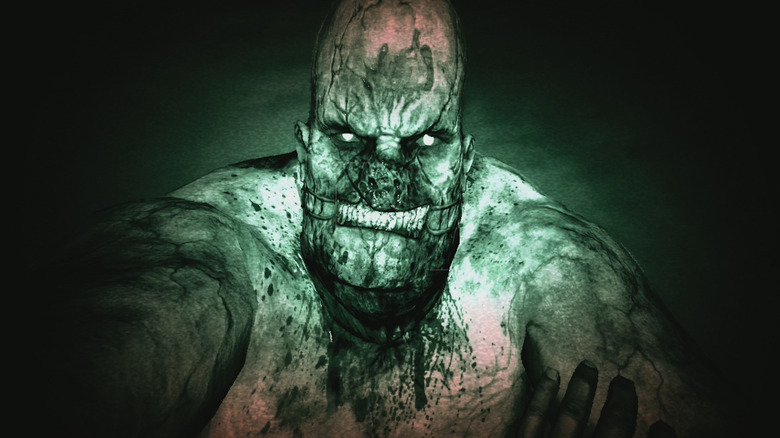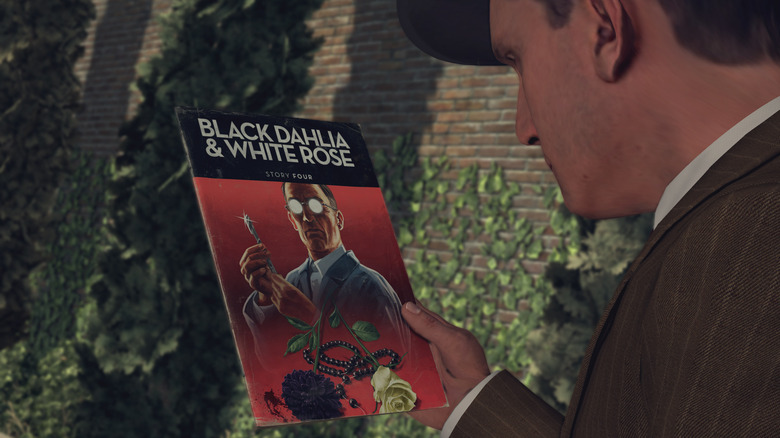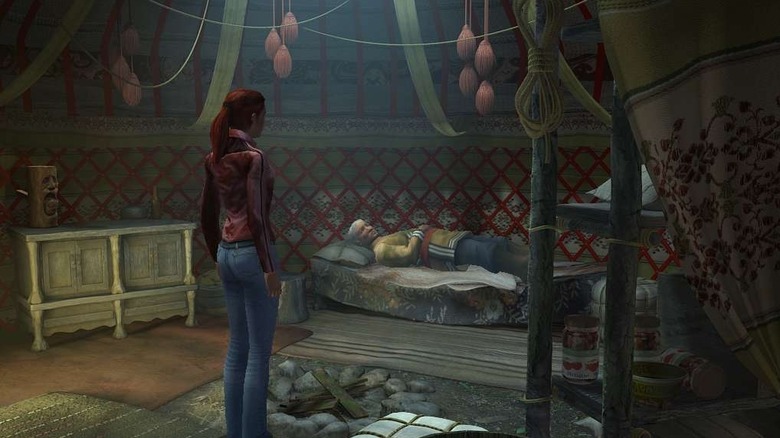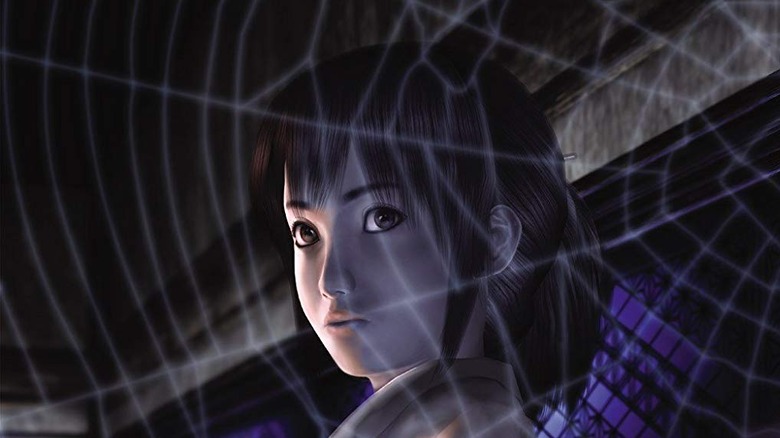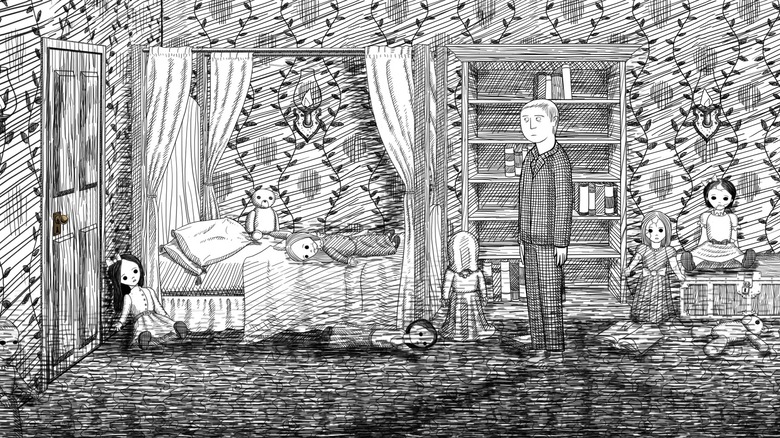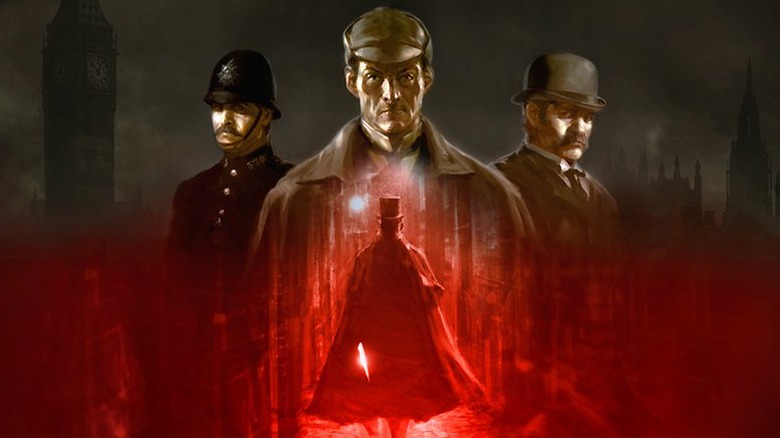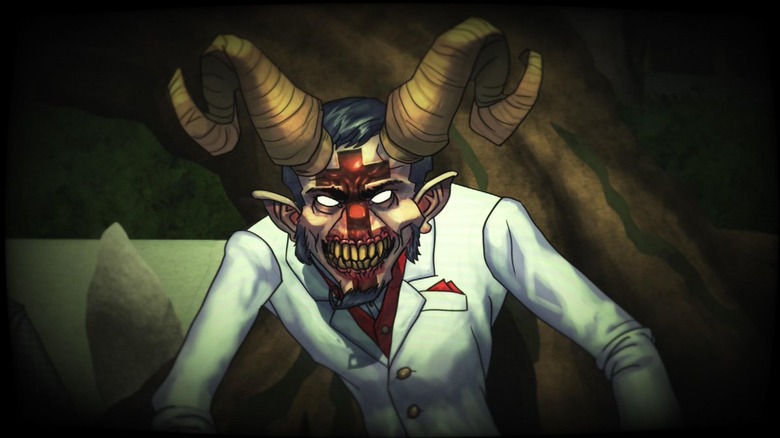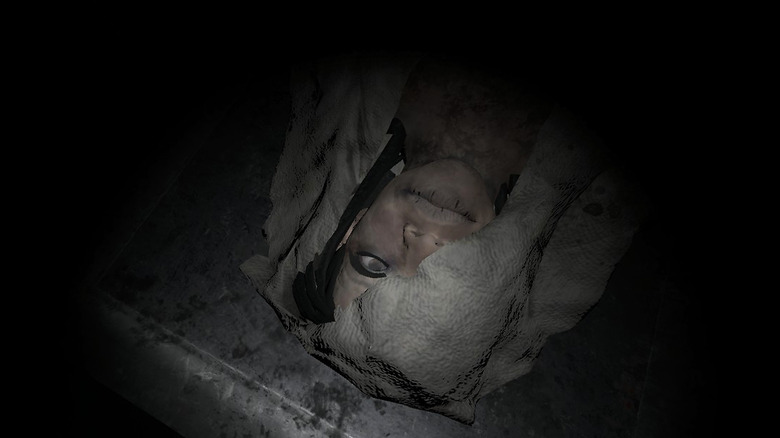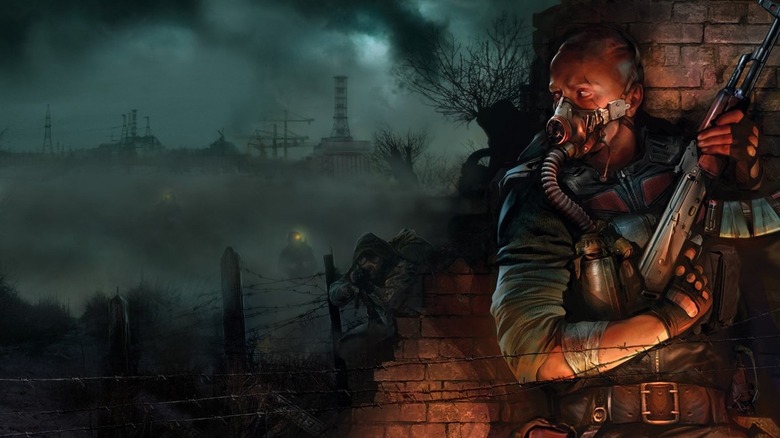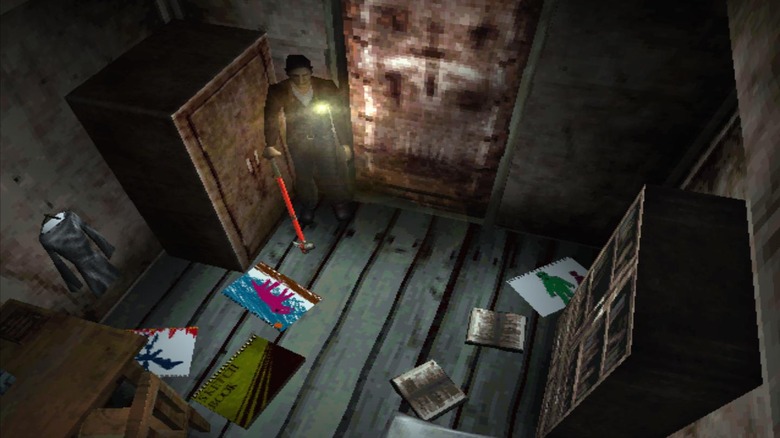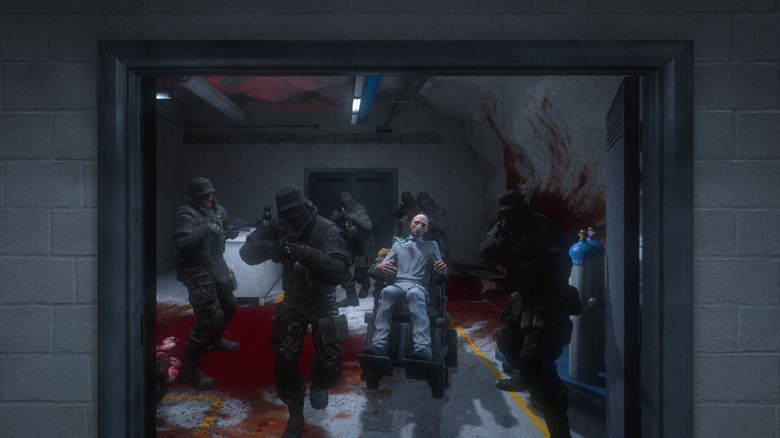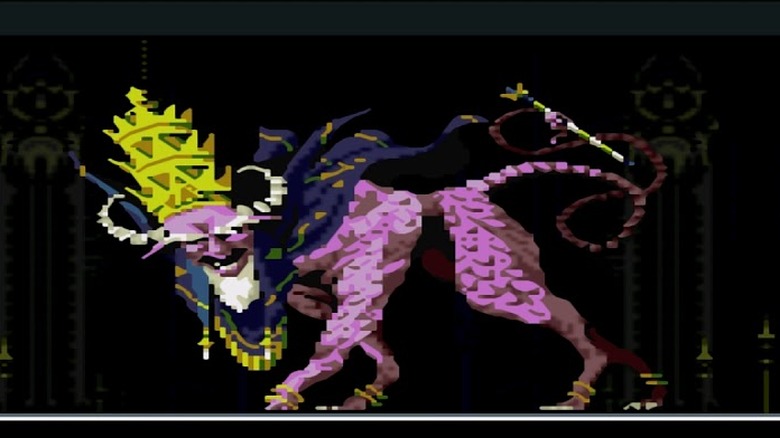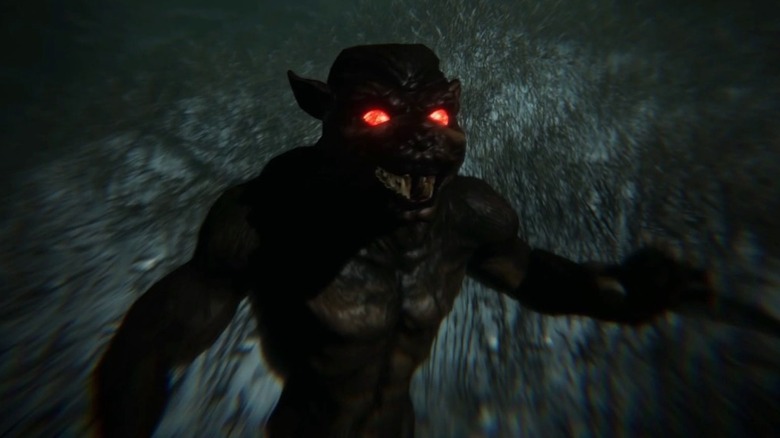Creepy Real Life Events That Inspired Great Games
The world can be a scary place. That's probably why the horror genre is so popular. Being able to take our real life fears and channel them into something more fantastical can take a lot of the bite out of the things that really bother us, while also providing a new form of entertainment. It's when those lines blur between what's real and what's make-believe that things start to get really interesting (and occasionally upsetting).
Sometimes, truth can be stranger than fiction. There are plenty of spooky shenanigans that take place in the real world without us having to embellish it too much. The things that go bump in the night occasionally get tired of just bumping around, rearing their ugly heads into frame and relishing the fright that they give us. From eternally burning ghost towns to twisted rituals and hauntings, some of our favorite video games have drawn inspiration from actual events. Sure, developers may take some artistic license with these tales, but they're still true enough to give us pause.
Beware: the following events involve some fairly traumatic subject matter. Also, there will be spoilers ahead for some of these games.
The real life Black Dahlia Murders - LA Noire
Rockstar Games' LA Noire is a crime-busting tale that draws much of its inspiration from classic detective movies. However, one particular case is based on a real murder from the 1940s. The character of Garrett Mason is introduced as a bartender in the Los Angeles nightlife scene. However, the job is simply a cover for his nocturnal activities as a serial killer known as "the Werewolf." Mason murders several women, including Elizabeth Short, referred to by the press as the "Black Dahlia."
In real life, the Black Dahlia murder case was never solved, with whoever cut Elizabeth Short in half evading the police to this very day. There have been several suspects in the case over the years, but with the only eye witness to the crime seeing nothing more than a black sedan fleeing the scene, it was impossible for the authorities to pin the murder on anyone. One of the most satisfying moments of LA Noire is being able to finally solve this cold case, even if only in a fictional sense.
The real life Tunguska Event - Secret Files: Tunguska
Secret Files: Tunguska is a point-and-click mystery game that follows a young woman attempting to find her missing father. She comes to learn that his disappearance is somehow connected to the unexplained Tunguska Event, a very real disaster that flattened more than 830 square miles of forest in Siberia. In 1908, a gigantic explosion occurred that lit up the sky as far away as Great Britain. In the days before satellite imaging, it was impossible to tell what had caused the explosion, leading to numerous conspiracy theories surrounding the blast. In fact, no one was able to reach the area to conduct a proper study until the 1920s.
While it has been more or less concluded by modern day scientists that the explosion was caused by a comet or an asteroid breaking up while entering Earth's atmosphere, the Tunguska Event continues to fascinate to this day. It has worked its way into pop culture, inspiring this game and episodes of The X-Files.
The horrific Himuro Mansion - Fatal Frame
The story and setting of the Fatal Frame series was heavily inspired by the legend of Himuro Mansion, an ancient manor outside of Tokyo. According to Japanese lore, the family that once lived in Himuro Mansion participated in a horrific ceremony called "the Strangling Ritual." This was supposedly done "in order to seal off bad karma from within the Earth." However, after one of the rituals went awry, the family's patriarch brutally murdered his entire family, then killed himself. The ghosts of the family now supposedly haunt the mansion, attempting to perform the ritual again and again, for all eternity.
According to the Chief Producer of Fatal Frame, Makoto Shibata, "If you take a photo of a certain window [in Himuro mansion], a young girl can be seen in the developed picture." This led to the use of a camera lens as the primary method of ghost-detecting in the Fatal Frame franchise. Not only that, but the first two installments of the series take place in Himuro Mansion itself, with the first game even depicting the dreaded Strangling Ritual.
A creator's real life struggle with mental health - Neverending Nightmares
Neverending Nightmares is a horror game composed of exactly that: nightmares. In an attempt to save the protagonist from his own inner demons, players guide him through several nightmarish scenarios. Each layer of his subconscious reveals new terrors, including gory torture sequences and more traditional haunted house elements. Adding to this uncanny sense of things being just plain wrong is the stark black and white color scheme, with occasional splashes of bloody red when things get particularly nasty.
Several of the game's more horrific set pieces, such as one moment when the main character pulls an artery out his body with his bare fingers, are based upon real intrusive thoughts suffered by game creator Matt Gilgenbach during his bouts with depression and obsessive-compulsive disorder. Therefore, while the game's journey is a disturbing one, it's all about trying to find meaning in these darker moments and to hopefully find a way out of that darkness. As explained by Gilgenbach himself, he wanted people to understand how it felt to live with these feelings.
The (shockingly accurate) Ripper murders - Sherlock Holmes vs. Jack the Ripper
In 1888, the mysterious killer dubbed Jack the Ripper was responsible for the brutal murders of five women (that we know of), carrying them out with an almost medical level of precision. Over the course of the year that he terrorized London, Jack would send the local police letters bragging about his past crimes and atrocities to come, once including a partial human kidney with a letter. Naturally, being one of the most famous serial killers in history, Jack the Ripper is no stranger to pop culture, with his exploits being adapted to graphic novels like From Hell and, in this case, video games like Sherlock Holmes vs. Jack the Ripper.
It's almost a no-brainer to want to pit the greatest fictional detective of all time against a contemporary villain. However, what is most surprising about this game is the level of detail it goes into regarding the very real murders. These people actually died after all, so it does cast an uncomfortable shadow when the game, as noted by Adventure Gamers in their review, "does adhere to, and adhere accurately, the specifics of very nasty and real crimes."
Portrait of the real life Albert Fish - Masochisia
Albert Fish was a deranged murderer and cannibal in the 19th century who claimed somewhere around 100 confirmed victims, although he reportedly confessed to hundreds of crimes. His methods are too grotesque to relate here, but let's just say that he was an all-around bad dude. Fish was sentenced to death in 1935, but his crimes have continued to fascinate criminal psychologists to this day.
The game Masochisia attempts to show players how such a man could be created, guiding players through Fish's descent into madness and his awful home life in his early years. The game is drawn like a twisted storybook, giving almost a whimsical feel to the graphic and disturbing proceedings. Masochisia also gives gamers an opportunity to reflect on why it feels so different to play as Albert Fish and not, say, Nathan Drake, who also tends to kill everyone in his path. As mentioned in Hardcore Gamer's review of Masochisia, "In games ... our characters are, by default, the 'hero' and therefore, whatever they do is inherently good." Here, however, there's absolutely no mistaking Albert Fish as a force for good.
The mark of the Zodiac - The Exorcist: Legion VR
The Exorcist is widely considered to be one of the most frightening films ever made. It's no surprise, then, that the franchise transitioned well to video games with The Exorcist: Legion VR. Bloody Disgusting praised the game for its atmosphere and the fact that it "maintains a sense of unease from start to finish."
When writing the original novel that would launch the Exorcist franchise, author William Peter Blatty drew from an apparent case of true demonic possession. A young boy in Germany in the 1940s named Roland Doe exhibited many of the eerie phenomena in the novel and the films, including speaking in languages he couldn't have known and having unexplained claw marks appear on his body.
Meanwhile, the story of Legion, the sequel novel and film from which Legion VR is loosely adapted, was inspired by the exploits of the infamous Zodiac Killer, who murdered several people in San Francisco in the 1960s. In a letter to the police sent in the '70s, the Zodiac also famously referred to The Exorcist film as "the best satirical comedy that I have ever seen."
A genuine nuclear disaster - S.T.A.L.K.E.R.: Shadow of Chernobyl
In 1986, an improperly designed and maintained nuclear reactor at the Chernobyl nuclear power plant in Ukraine suffered an explosion that sent around 5% of the reactor's radiation out into the atmosphere, resulting in multiple deaths and a state of emergency. According to the World Nuclear Association, "The Chernobyl disaster was a unique event and the only accident in the history of commercial nuclear power where radiation-related fatalities occurred."
But imagine if that disaster weren't so unique, but rather a second incident occurred with much more far-reaching consequences. That scenario is where the story of S.T.A.L.K.E.R.: Shadow of Chernobyl begins. In the alternate reality of this series, the initial disaster inspired several mad scientists in the Soviet Union to use the now-abandoned area for their experiments on human minds. Things eventually got out of hand, as mad science often does, which led to the second disaster and a literal break in the fabric of reality. While the conspiracy featured in S.T.A.L.K.E.R. is very much fictional, the root of the story lies in the fears that sprang from the very real, very tragic Chernobyl disaster.
The real life ghost town of Centralia - Silent Hill
The foggy, desolate streets of Silent Hill must seem like they couldn't possibly exist. However, the town of Centralia, Pennsylvania is the real life version of the ghost town that has haunted the dreams of gamers for years. And much like Silent Hill, Centralia has seen its fair share of tragedy.
Centralia was once a prospering mining town with thousands of happy residents. However, in the early '60s, a fire broke out in the mine that ran beneath the town. Due to the pockets of oxygen and the coal in the mines, the fire continued to spread and was impossible to contain. Over the years, burning sinkholes began to open in the ground and locals would pass out due to the gases that leaked out. The fire still burns today, and the population of the town has all but moved away, their numbers dwindled to less than a dozen.
There aren't any pyramid-headed killers in Centralia (hopefully), but the real life terror of being forced to leave your homes in fear of fire coming from beneath is exactly the kind of stuff nightmares are made from.
Government mind control programs - Outlast
As explained by History.com, "MK-Ultra was a top-secret CIA project in which the agency conducted hundreds of clandestine experiments—sometimes on unwitting U.S. citizens—to assess the potential use of LSD and other drugs for mind control, information gathering and psychological torture." These experiments included forced hallucinations by means of psychedelic drugs and shock treatments, just to see how test subjects would react. Many of these human guinea pigs weren't even told they were part of a test like this, with men behind two-way glass watching them as they were dosed with all kinds of chemicals and stimulants.
Fittingly, these extremely messed-up proceedings led to one of the scariest video game series in recent memory. Project MK-Ultra (also referred to as MKUltra) inspired the dirty dealings of the Murkoff Corporation in the Outlast franchise. Following the government's closure of the project, the Murkoff Coporation spun that research into their own experiments on mind control and lucid dreaming. Again, as fantastical as the events of Outlast can get, the fact that the horror is rooted in something so very real and close to home makes it all the more effective.
The dark rituals of Aleister Crowley - Shin Megami Tensei
Though he may be best known to mainstream audiences for inspiring a truly rad Ozzy Osbourne song, Aleister Crowley was actually a real life occultist who founded his own dark religion in the early part of the 20th century. Crowley was dubbed "the Wickedest Man in the World" by newspapers, a title he seemed to embrace and enjoy. He and his followers often performed sexual black magic rituals, with Crowley claiming to have been able to summon demons through these carnal acts. In other words, he wasn't exactly the kind of guy you wanted to bring home to meet the folks.
Naturally, the Shin Megami Tensei series turned ol' Mr. Crowley into a comical minor character. He appears in Shin Megami Tensei 2 as a human occultist ruling over the demonic plane known as the Expanse. Furious that Lucifer won't let him celebrate the current full moon (and feeling extremely sexually frustrated, of course), the occultist transforms into the demon called Master Therion. Though he is defeated in this game, Master Therion would go on to make appearances in other games in the series.
A rampaging "beast" that killed dozens in real life - Gevaudan
Gevaudan is a first-person horror game that drops players into the hunting grounds of a dangerous monster. All you have on your side is your wits and quick reflexes as you attempt to make your way out of the forest to safety. The beast itself is something too awful to have existed, right?
It's hard to believe this, but from 1764-1767, the Gévaudan region in the south of France was gripped with fear. A "monster" claimed somewhere around 100 victims. Dubbed the Beast of Gévaudan, the creature caused such a stir that thousands of men volunteered to help search for it and bring it down. The hysteria grew further when witnesses began describing the beast as having supernatural powers, like the ability to resurrect itself from the dead.
Present day biologists have more or less concluded that the beast must have been either a particularly aggressive pack of wolves or a lion that escaped from some kind of traveling show. A lion wouldn't have been so readily recognized in those days, which accounts for people not being able to comprehend the unearthly creature they were seeing (the survivors, anyway).

